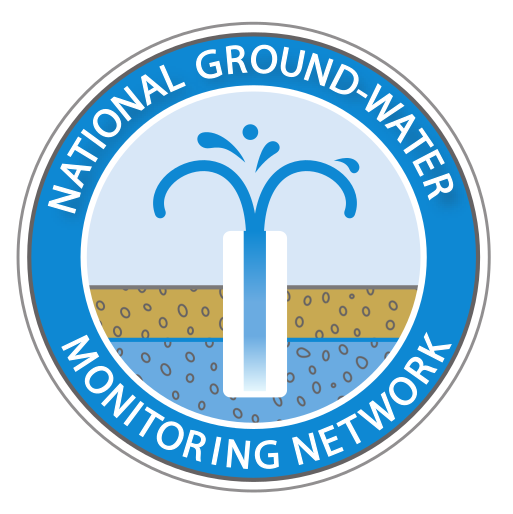Arizona Department of Water Resources
Link to: Arizona Department of Water Resources Groundwater Information
NGWMN Contact:
Teri Davis
(602) 679-0932
tddavis@azwater.gov
The Arizona Department of Water Resources (ADWR) is a water-level data provider to the National Groundwater Monitoring Network (NGWMN). ADWR annually monitors groundwater levels at more than 1,450 wells sites, most of which were originally selected by the USGS and have measurements dating back to the 1940s and 1960s. Currently, 5 well sites have been added to the NGWMN Portal and serve as trend wells. ADWR has been a part of the Network since 2016.
ADWR provides water-level data from the Colorado Plateaus and Basin and Range basin-fill aquifers.
NGWMN Projects:
2016 Round 2: 10/1/2016 to 9/30/2018
Initial project to become a NGWMN data provider. Worked to select and classify of a hand full of real-time continuous and discrete monitoring well-sites.
Project will add significant number of new sites to the Network and perform necessary work to maintain current data services to the NGWMN Portal.
2020 Round 1: 9/20/2020 to 9/29/2022
Project is to provide persistent data services for two years to ensure that data continues to flow to the NGWMN Data Portal, and that sites and site information are up to date.
2020 Round 2: 12/30/2020 to 12/29/2022
In this project they will evaluate over 300 potential new sites for inclusion in the NGWMN. They anticipate that between 100 and 200 of these wells will be added to the NGWMN. They will also fill site information data gaps by doing GPS work and well depth sounding at 27 wells.
NGWMN Presentations:
Site Selection and Classification
Site Selection
Candidate monitoring well sites within principal or major aquifers were considered for potentialinclusion in the Network based on the site selection criteria generally described within the NGWMN Framework Report and the NGWMN Tip Sheets.
ADWR water level monitoring sites have historically been selected to provide spatial distribution or coverage within a groundwater basin and to assess vertical gradients where possible. ADWR measures water levels in a wide variety of well types including irrigation, stock, domestic, municipalities, monitor, and unused. Generally, wells that had been selected for "index" well designation (wells that are measured at least annually, with many being measured more frequently) are based on guidelines developed by the USGS Office of Ground Water for the Collection of Basic Records (CBR) Program.
Minimum criteria for monitoring well selection can include:
- Open to a single, known aquifer category (i.e. Principal, Secondary, Local and/or Hydrogeologic Unit),
- Known well construction, including total depth,
- Minimally affected by pumping or nearby pumping and likely to remain so,
- Unaffected by irrigation, canals, and other potential sources of artificial recharge,
- High probability of long-term monitoring for the foreseeable future,
- Well has never gone dry and low probability of going dry due to well construction and aquifer parameters (exceptions may apply to wells used for specific monitoring purposes such as compliance or short-term objectives),
- Up to-date and accurate well site inventory.Prior record of water levels exists from sources ADWR, USGS, or BOR and, or has been used in previous hydrologic studies or other published works, and
- Lithologic and/or geophysical logs available.
Please note the selection criteria may vary for ADWR GWSI Index wells depending on area specific monitoring objectives. For example, a well may be selected to monitor confined conditions versus unconfined for specific regional data needs. Others may include, but are not limited to, drought specific wells, recharge monitoring wells, flood/event monitoring wells, etc.
Site Classification
All five ADWR Network wells are measured frequently, each least annually, therefore falling into the "trend" monitoring category. Three well sites are measured daily by continuous automated water level devices (pressure transducers), one is measured on a quarterly basis by a calibrated water level sounder and one was measured on an annual basis which has now been rescheduled to quarterly measurements also made by a calibrated water level sounder.
Review of hydrographs and well logs (geologic, geophysical, and, or driller) provided the data necessary to determine both monitoring and subnetwork categories and aquifer type determinations. Documented changes are observed within two of the Colorado Plateaus aquifers wells. Suspected changes are observed in the both Colorado Plateaus aquifers and Basin and Range - Basin Fill aquifer wells.
Data Collection Techniques
ADWR's data collection procedures are consistent with the standards outlined in Appendix 5 of the NGWMN Framework Report. ADWR's original groundwater level monitoring program was patterned after the USGS management practices, collection protocols, standards, and techniques, specifically Garber and Koopman (1968) and Mann (1980).
Today, ADWR continues to model field techniques for water level measurements and water level monitoring practices after the USGS (Taylor and Alley, 2001 and Cunningham and Schalk, 2011). ADWR groundwater level data collection protocols and methods, and field techniques for water level measurements, are documented in the ADWR Field Service Section Training Manual which is undergoing final update and revision.
Presently, ADWR uses commercial electric tapes, graduated steel tapes, electric sounders, and a variety of pressure transducers, bubblers, and float recorders with shaft encoders for groundwater-level measuring instruments. All water-level measuring devices are calibrated annually if not more often by a dedicated steel calibration tape that is always kept in the office as a reference; the frequency of their calibration varies depending upon the instrument.
Data Management
All field collected data are entered into ADWR's GWSI database with application-built data quality checks into the data entry screens.
Data are quality controlled by standardized field methods and procedures designed to identify anomalous measurements or data. Once all data are entered into ADWR GWSI, information is further reviewed by established protocol for consistency with previous water level trends. Water level change error reports are sent to the Section Manager, Supervisor and GWSI database administrator for review and verification for previous water levels greater than set parameters.
Other Agency Information
Arizona Department of Water Resources Groundwater Information
Groundwater Data, Pumping Data, and Well Logs
Groundwater and Land Subsidence

